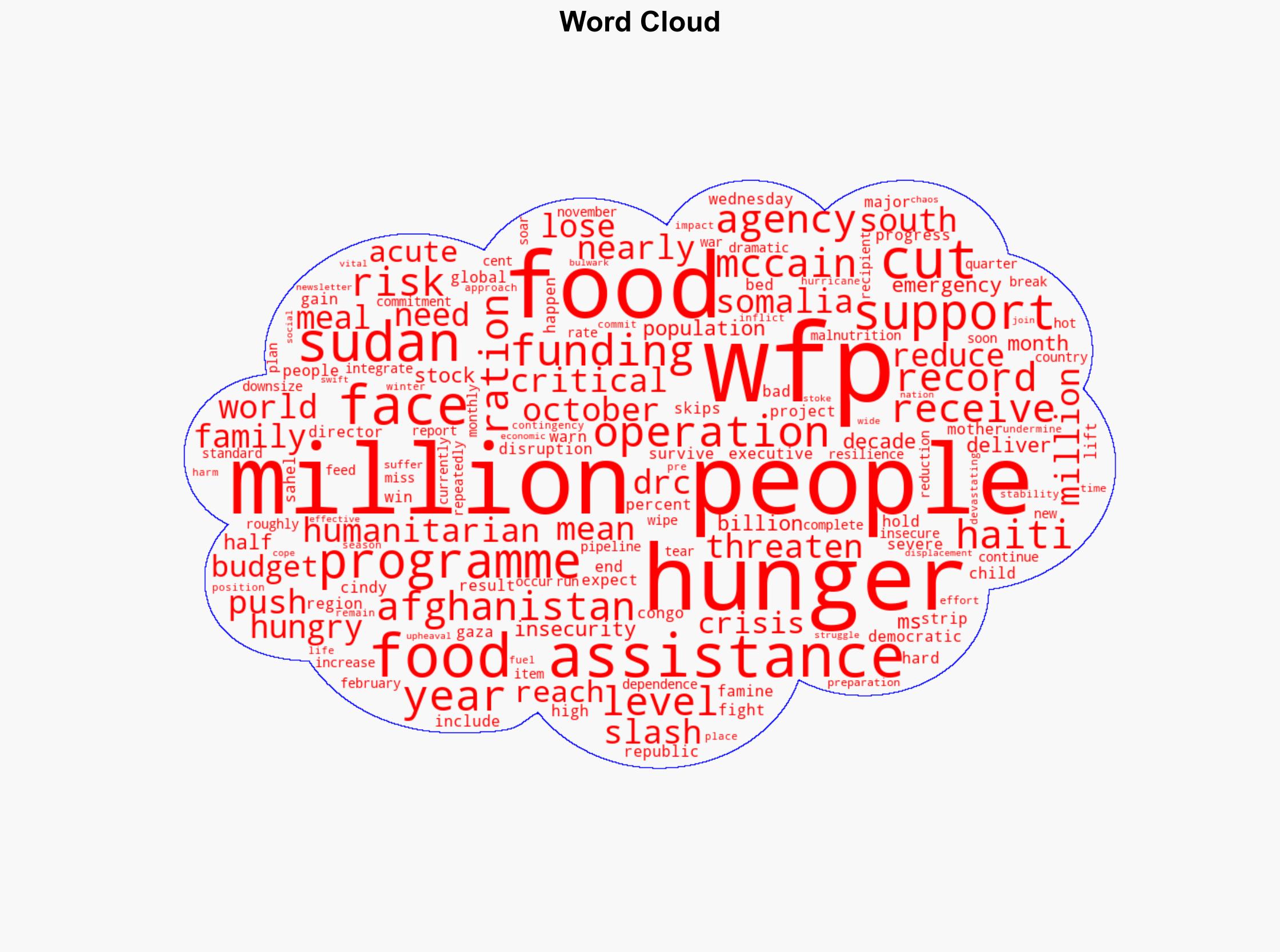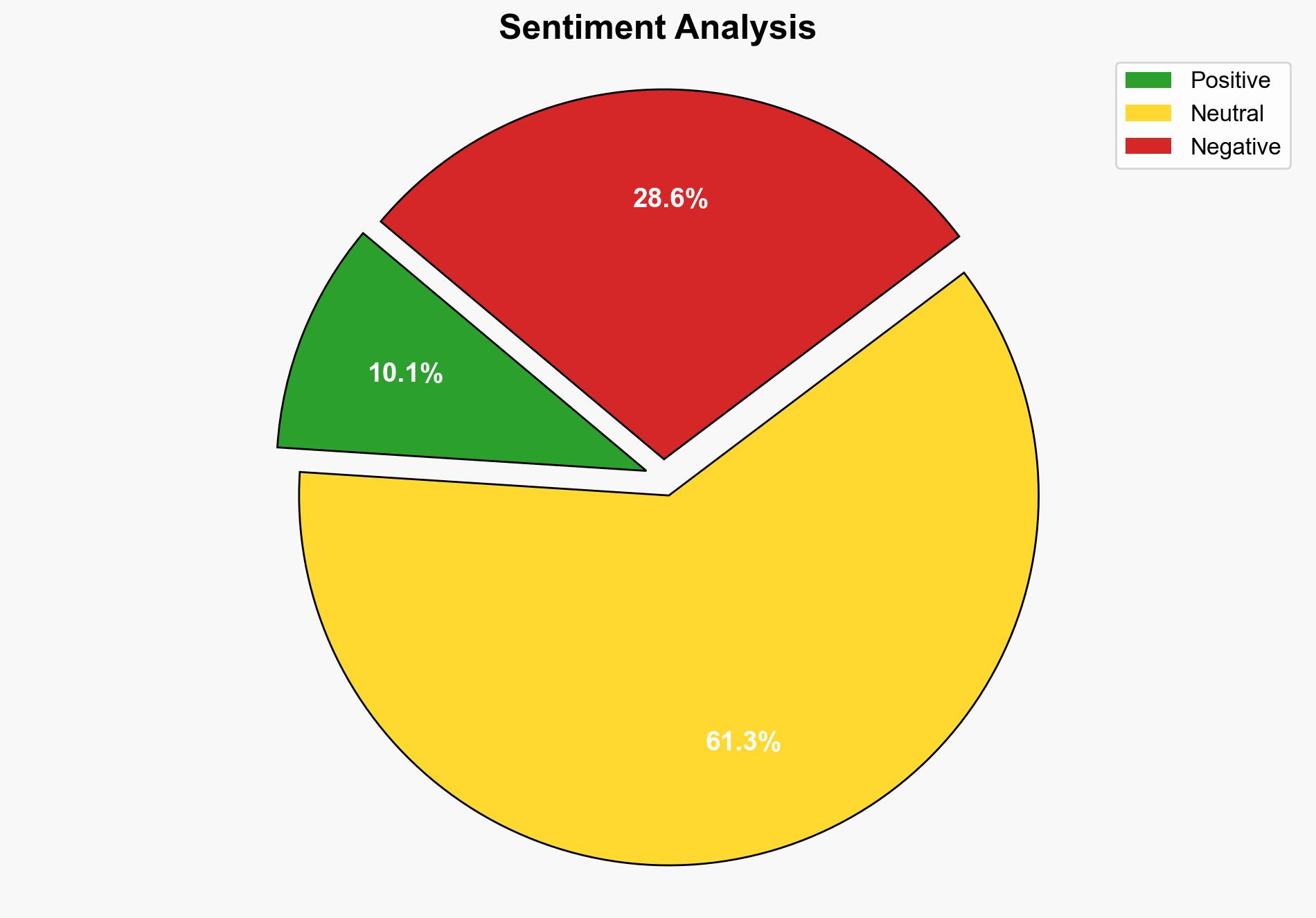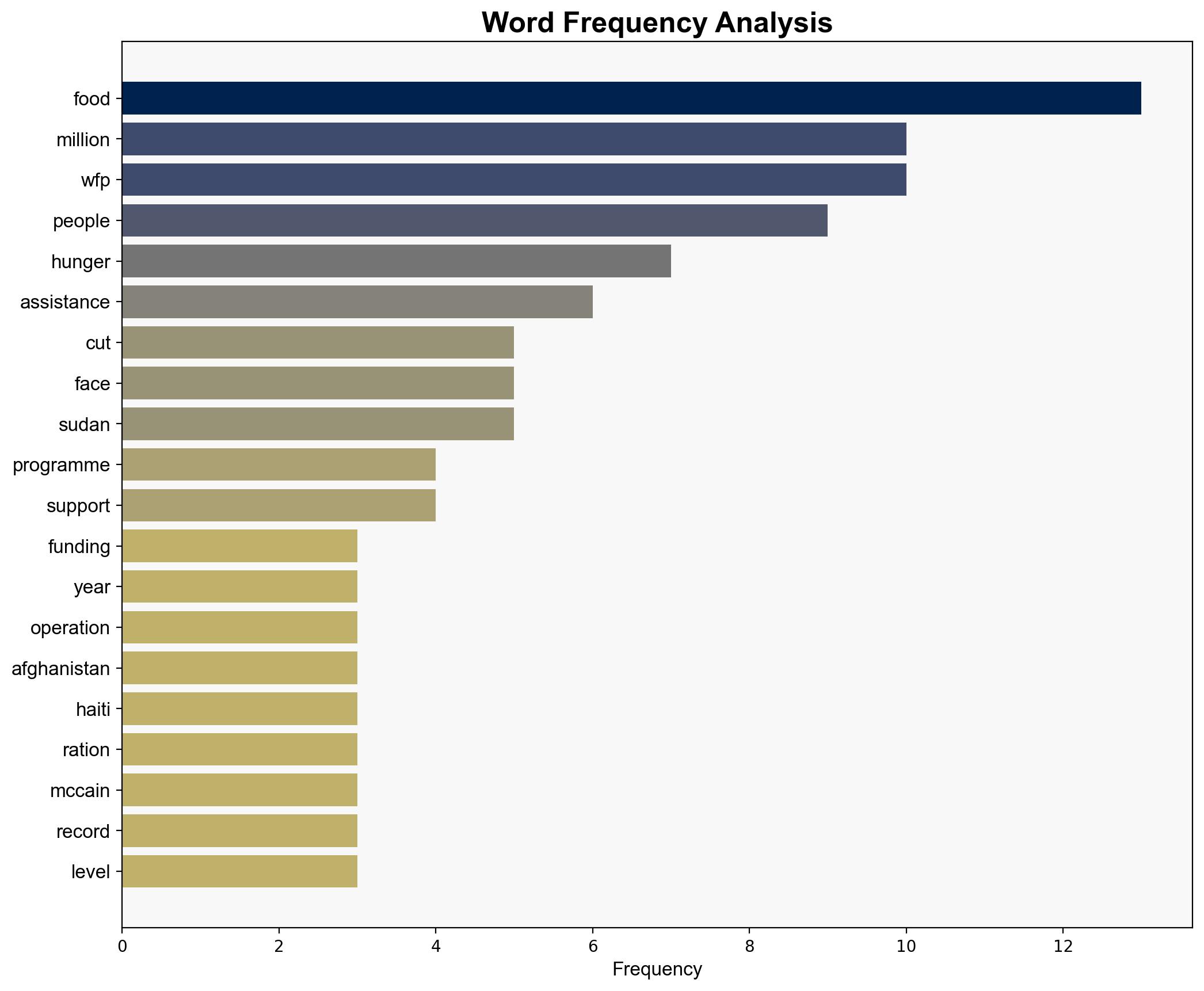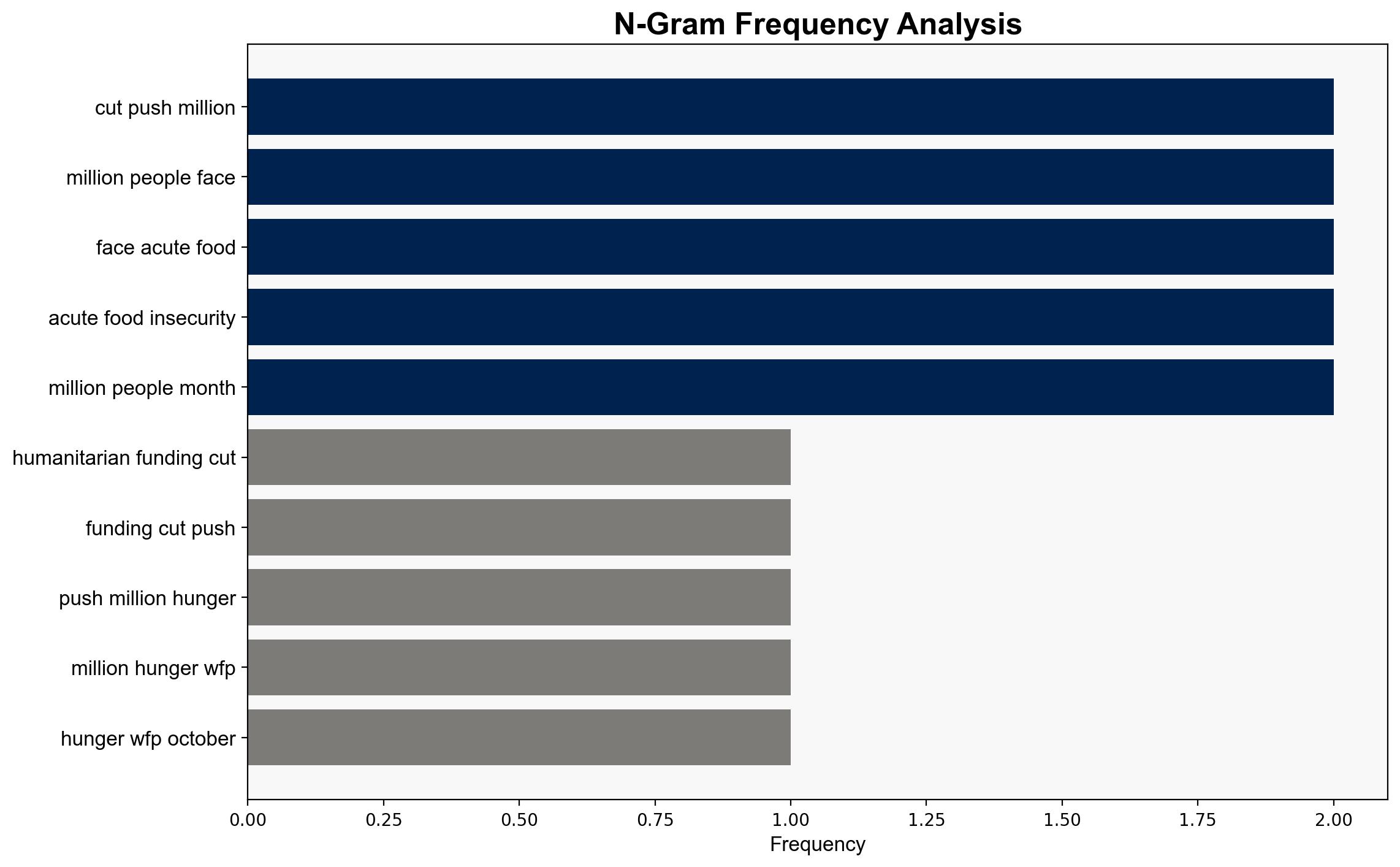Humanitarian funding cuts pushing millions into hunger WFP – Globalsecurity.org
Published on: 2025-10-20
Intelligence Report: Humanitarian funding cuts pushing millions into hunger WFP – Globalsecurity.org
1. BLUF (Bottom Line Up Front)
The most supported hypothesis is that humanitarian funding cuts are directly exacerbating food insecurity, leading to increased hunger and potential instability in affected regions. Confidence level is moderate due to reliance on WFP data and potential reporting biases. Recommended action includes advocating for international funding restoration and exploring alternative food assistance strategies to mitigate immediate risks.
2. Competing Hypotheses
1. **Hypothesis A**: Humanitarian funding cuts are the primary driver of increased hunger and instability in affected regions.
– **Supporting Evidence**: WFP reports indicate significant funding shortfalls leading to reduced food assistance, directly correlating with increased hunger levels.
– **SAT Applied**: Analysis of Competing Hypotheses (ACH) 2.0 shows a strong correlation between funding cuts and increased food insecurity.
2. **Hypothesis B**: Other factors, such as local conflicts and economic downturns, are the primary contributors to increased hunger, with funding cuts being a secondary factor.
– **Supporting Evidence**: Regions like Sudan and Afghanistan face ongoing conflicts and economic challenges that could independently exacerbate food insecurity.
– **SAT Applied**: Bayesian Scenario Modeling suggests that while funding cuts are significant, other factors may also play a critical role.
3. Key Assumptions and Red Flags
– **Assumptions**:
– WFP data accurately reflects the situation on the ground.
– Funding cuts are the primary variable affecting food assistance delivery.
– **Red Flags**:
– Potential bias in WFP reporting due to organizational interests.
– Lack of independent verification of data from conflict zones.
4. Implications and Strategic Risks
– **Patterns**: Consistent reduction in food assistance correlates with increased hunger and potential for social unrest.
– **Cascading Threats**: Prolonged food insecurity may lead to increased migration, regional instability, and potential exploitation by extremist groups.
– **Potential Escalation**: Economic and social upheaval could destabilize governments, leading to broader geopolitical tensions.
5. Recommendations and Outlook
- Advocate for immediate restoration of international humanitarian funding to stabilize food assistance programs.
- Develop contingency plans for alternative food distribution methods, including local sourcing and partnerships with NGOs.
- Scenario-based Projections:
- **Best Case**: Funding restored, food assistance programs resume, and hunger levels stabilize.
- **Worst Case**: Continued funding cuts lead to widespread famine and regional instability.
- **Most Likely**: Partial funding restoration mitigates some risks, but challenges persist in conflict zones.
6. Key Individuals and Entities
– Cindy McCain
– World Food Programme (WFP)
7. Thematic Tags
national security threats, humanitarian crisis, food security, regional instability




